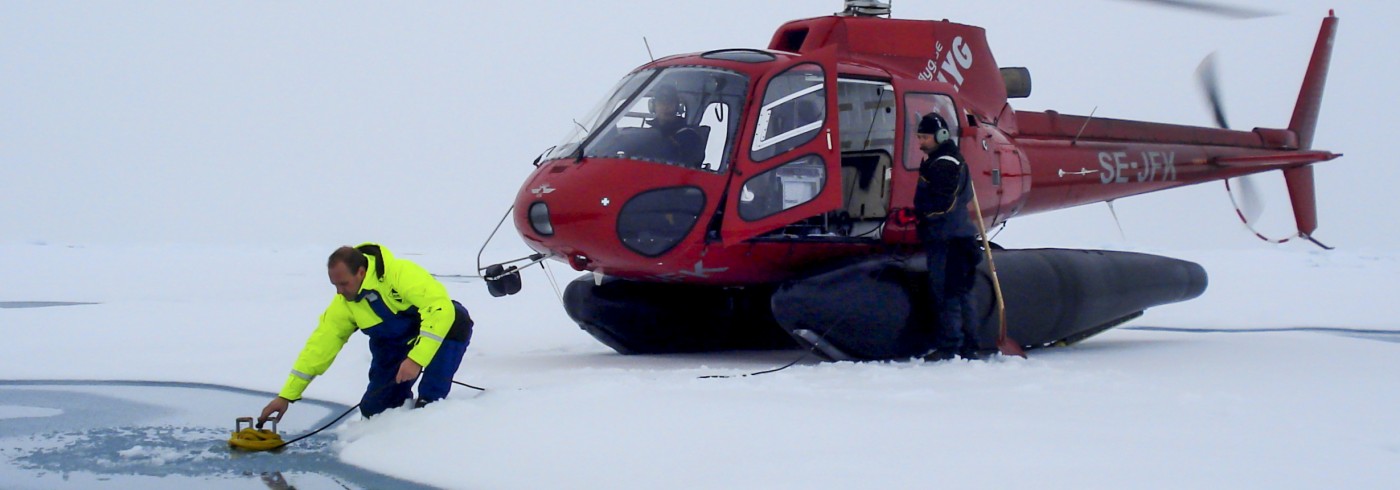Past environmental changes in central Arctic Ocean
31 July 2009 - 10 September 2009
Oden reached the geographical North Pole on August 22 at 21:04 (UTC). The arrival at the North Pole was celebrated by raising the flags of the countries represented onboard Oden. After a glass of champagne on the bridge and a group photo on the sea ice in front of Oden, the expedition continued its scientific program. Photo: Adam Jeppesen
The Arctic plays an important role in the global climate system. Snow and ice cover in the Arctic inf luences Earth’s albedo, controlling how much of the solar radiation is reflected back into space. Another important factor is the exchange of deep water masses between the Arctic Ocean and the North Atlantic, which is one of the fundamental components in the thermohaline circulation. To better understand how the Arctic has responded to past climatic changes, we need detailed records of environmental changes from different parts of the Arctic.
On this cruise the aim was to obtain high resolution sediment records from the Lomonosov Ridge in the central Arctic that can reveal something about the deep water circulation in the Arctic basins, the sea ice history and the connection to the huge ice sheets that developed on the American and Eurasian landmasses surrounding the Arctic Ocean. The sediment cores were taken at water depths ranging from around 1 km to more than 3 km, using two different sampling devices: a gravity corer and a piston corer. The gravity corer basically consists of a steel barrel with a plastic tube inside that is lowered to the sea floor and pushed into the sediment by heavy weights. When the coring device is hoisted back to the ship, the plastic tube full of sediment can be pulled out and taken back to the lab for analysis. The piston corer is more complicated, but delivers longer and less disturbed records. The piston corer has a trigger weight attached to a release arm. When the trigger weight reaches the sea floor, the piston corer is released and falls freely for the last few meters, thereby reaching a considerably higher velocity when it impacts the sediment. To prevent deformation during penetration the piston corer is fitted with a piston that remains in a fixed position at the sea floor while the core barrel penetrates the sediment. Calculating the distance the coring device is permitted to fall freely as well as the length of the trigger weight line is crucial to obtaining good cores. During LOMROG II we had some initial problems adjusting these lengths to obtain optimal results. We also had serious problems with the winch, but despite this, 9 cores were successfully retrieved, totalling more than 45 m of sediment.
The first results from our on board observations suggest that the Arctic Ocean was affected by massive flooding from an ice-dammed lake some 55,000 years ago. More results are forthcoming.

